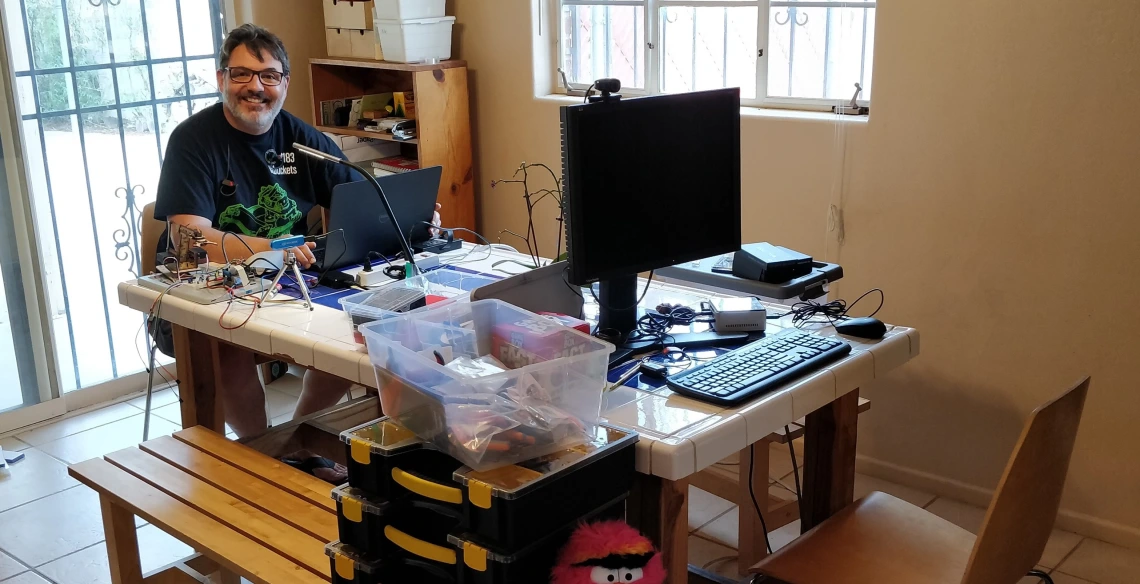Living Room Labs Keep Experiential Learning Going
With most campus facilities shut down because of COVID-19 restrictions, biomedical engineering professors are finding ways to deliver the lab to students at home.

Biomedical engineering professor Urs Utzinger in his living room, putting together boxes of lab supplies for his undergraduate students.
Many people choose to become engineers because they like working with their hands. An engineering education, particularly in the University of Arizona’s Craig M. Berge Engineering Design Program, offers an abundance of hands-on learning experiences, from building solar ovens to 3D-printing jet engine parts.
The shift to online learning in the face of COVID-19 has required adjustments from everyone on campus. But lab courses -- in which students conduct experiments; fabricate devices; and learn how to work equipment such as mills, lathes and 3D printers -- have been especially hard hit.
Urs Utzinger, associate professor and associate department head for biomedical engineering undergraduate affairs, isn’t letting that stop him from providing a hands-on experience to the students in his sophomore engineering design course. He gathered microcontrollers, motors and other mechanical parts, boxed them up into 42 individual kits, and mailed them to students, who are now assembling, testing and calibrating from home.
“This is specifically for our students to continue their classwork in this time,” Utzinger said. “We still have the same goals, and we want to offer as close to the same learning experience as possible. We just cannot do everything online.”
Doing At-Home Experiments
Utzinger also co-teaches a new course, BME 310, with assistant professor Philipp Gutruf, in which juniors design and create biomedical devices in the new Peter and Nancy Salter Medical Device Design Lab. The students have been designing sensors that attach to a person’s skin and record sweat rate. The plan was for students to create the sensors, design their own experiments and test the devices -- on campus.
Instead, the students shared their design files with Gutruf and Utzinger, who are fabricating the devices in the laboratory and sending the finished products back to students. The students can attach the sensors to themselves and record their own sweat rates.
“They can exercise in their living rooms and have mapped out their own small clinical trial in their homes,” Gutruf said. “That’s probably as close as we can get, as far as having them learn all the steps in the process without coming into the lab.”
Tackling Real-World Problems
During the first two-thirds of BME 310, the students learn about device design and how to use sophisticated equipment. The last third of the course is a design competition, in which students develop and create a biomedical device. They have designed devices related to problems such as heat stroke, exercising in polluted areas and even COVID-19.
“We found it really impressive for undergraduate students to come up with these concepts,” said Utzinger. “There are some really unique wearable sensor systems that don’t exist in this format in research or in industry.”


